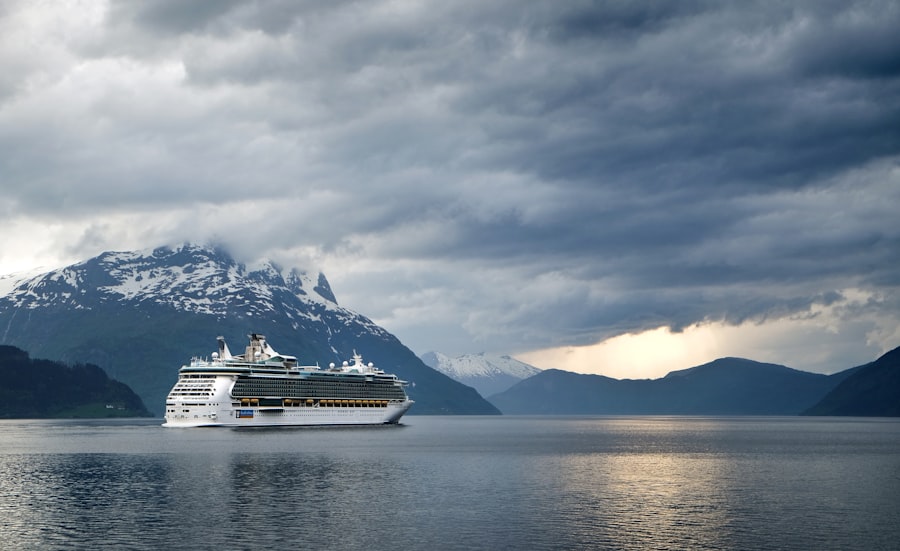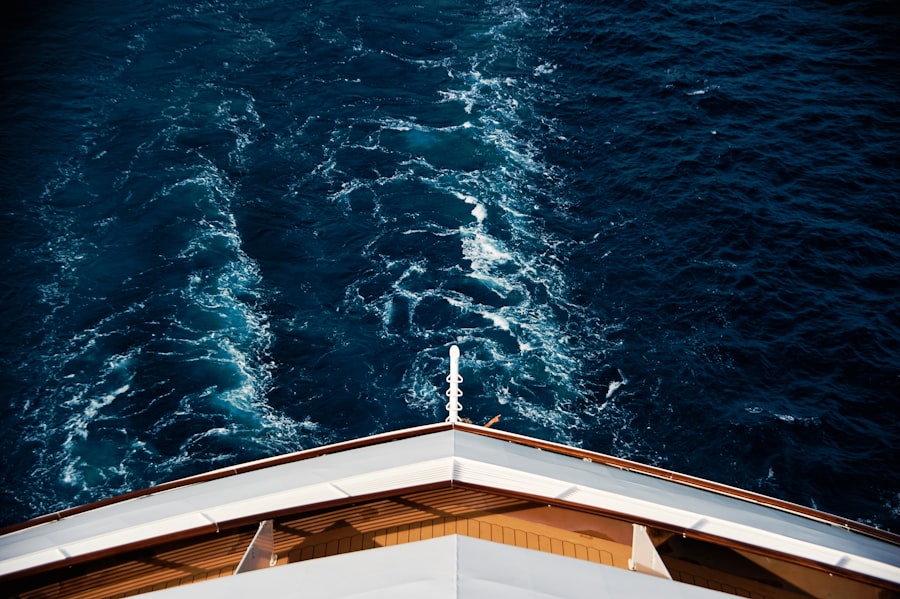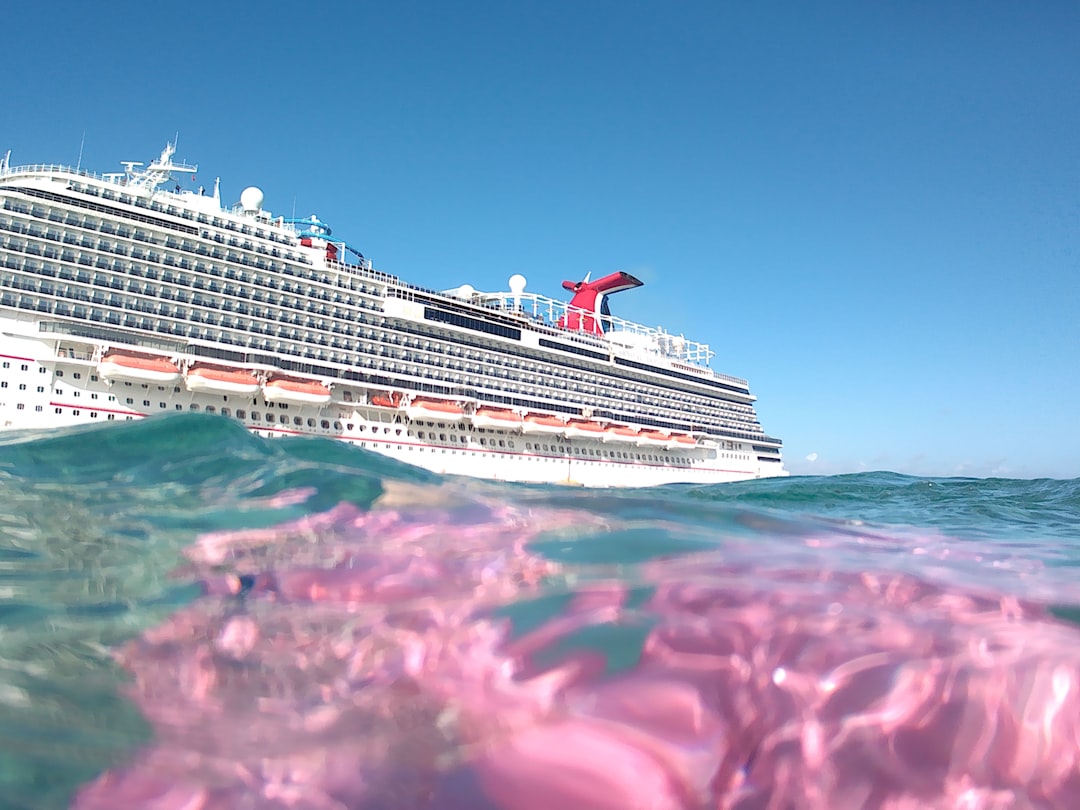The Drake Passage, a body of water that separates South America from Antarctica, is renowned for its tumultuous seas and breathtaking vistas. Stretching approximately 600 miles, it serves as a critical maritime route for vessels venturing to the southernmost continent. Named after the English explorer Sir Francis Drake, who navigated these waters in the late 16th century, the passage is not only a geographical marvel but also a significant point of interest for adventurers and researchers alike.
Its unique position makes it a vital conduit for ocean currents and marine life, contributing to its ecological importance. For many travelers, crossing the Drake Passage is more than just a journey; it is an initiation into the wild and untamed beauty of Antarctica. The passage is often characterized by its unpredictable weather and rough seas, which can transform a serene voyage into an exhilarating adventure.
As such, it has become a rite of passage for those seeking to explore the icy landscapes and diverse wildlife that await on the other side. The allure of the Drake Passage lies not only in its natural beauty but also in the stories and experiences that unfold during the crossing.
Key Takeaways
- The Drake Passage is a narrow body of water between South America’s Cape Horn and the South Shetland Islands of Antarctica.
- The Drake Passage has a rich history of exploration and is significant for its role in connecting the Atlantic and Pacific Oceans.
- Planning and preparing for a cruise through the Drake Passage requires careful consideration of weather, sea conditions, and safety measures.
- The wildlife and natural beauty of the Drake Passage, including sightings of whales, seals, and seabirds, make it a unique and captivating destination for nature enthusiasts.
- Crossing the Drake Passage can be a thrilling and adventurous experience, with the potential for rough seas and challenging sailing conditions.
The History and Significance of the Drake Passage
The history of the Drake Passage is steeped in exploration and discovery. Sir Francis Drake was one of the first Europeans to navigate these waters, and his journey in 1578 marked a significant moment in maritime history. His expedition not only provided valuable information about the geography of the region but also opened up new trade routes and opportunities for exploration.
Over the centuries, the passage has been traversed by countless explorers, scientists, and adventurers, each contributing to our understanding of this remote part of the world. The significance of the Drake Passage extends beyond its historical context; it plays a crucial role in global oceanic circulation. The passage connects the Atlantic and Pacific Oceans, allowing for the exchange of water masses and influencing climate patterns across the globe.
This unique hydrological feature supports a rich diversity of marine life, making it an essential area for ecological research. The waters of the Drake Passage are teeming with krill, which serve as a vital food source for various species, including whales, seals, and seabirds. Thus, the passage is not only a historical landmark but also a critical component of Earth’s environmental systems.
Planning and Preparing for a Cruise through the Drake Passage

Planning a cruise through the Drake Passage requires careful consideration and preparation.
Many companies offer various itineraries that include stops at iconic locations such as Deception Island and the South Shetland Islands.
It is essential for potential cruisers to research different options, comparing amenities, onboard experiences, and expert guides who can enhance their journey with knowledge about the region’s history and ecology. In addition to selecting a cruise line, travelers should also prepare for the unique challenges posed by the passage itself. Packing suitable clothing is paramount; layers are essential due to rapidly changing weather conditions.
Waterproof outerwear, insulated layers, and sturdy footwear are recommended to ensure comfort during excursions on land or while observing wildlife from the ship. Furthermore, travelers should consider their physical fitness levels, as some activities may require moderate exertion. By preparing adequately, adventurers can maximize their enjoyment and safety while navigating this remarkable waterway.
Wildlife and Natural Beauty of the Drake Passage
| Aspect | Details |
|---|---|
| Wildlife | Penguins, seals, whales, and seabirds can be spotted in the Drake Passage. |
| Natural Beauty | The Drake Passage offers stunning views of icebergs, glaciers, and dramatic landscapes. |
| Climate | The climate in the Drake Passage is characterized by strong winds, rough seas, and rapidly changing weather conditions. |
| Conservation | Efforts are being made to protect the wildlife and natural beauty of the Drake Passage through conservation initiatives and regulations. |
The wildlife found in the Drake Passage is as diverse as it is captivating. The waters are home to an array of marine species, including various types of whales such as humpbacks, orcas, and minke whales. These majestic creatures often breach the surface, providing unforgettable sightings for those on board.
Additionally, seabirds such as albatrosses and petrels can be seen gliding gracefully above the waves, their wings spanning impressive distances as they follow ships across the passage. The natural beauty of the Drake Passage is equally awe-inspiring. The landscape is characterized by dramatic cliffs, icy formations, and expansive views that stretch to the horizon.
As ships navigate through these waters, passengers are treated to stunning vistas of snow-capped mountains and glistening icebergs that reflect shades of blue and white. The interplay of light on these icy structures creates a mesmerizing spectacle that changes with every passing moment. This breathtaking scenery serves as a reminder of nature’s raw power and beauty, leaving an indelible mark on all who experience it.
The Thrill of Crossing the Drake Passage
Crossing the Drake Passage is often described as one of the most thrilling experiences in maritime travel. The unpredictable nature of the waters can lead to exhilarating moments as waves crash against the hull of the ship. For many adventurers, this sense of excitement is part of what makes the journey so memorable.
The passage is notorious for its rough seas, which can challenge even seasoned sailors; however, it is this very unpredictability that adds to its allure. As travelers embark on their crossing, they may find themselves captivated by the sheer power of nature surrounding them. The sound of crashing waves and howling winds creates an atmosphere charged with energy.
Passengers often gather on deck to witness this spectacle firsthand, sharing in the collective thrill of navigating through one of the world’s most formidable maritime routes. For many, this experience becomes a defining moment in their journey—a testament to their adventurous spirit and desire to explore uncharted territories.
Activities and Excursions on a Drake Passage Cruise

A cruise through the Drake Passage offers a plethora of activities and excursions designed to immerse travelers in the unique environment of Antarctica. Many cruise lines provide opportunities for guided landings on various islands where passengers can explore stunning landscapes and observe wildlife up close. These excursions often include hikes across rugged terrain or visits to research stations where scientists study climate change and its effects on polar ecosystems.
In addition to land-based activities, many cruises offer opportunities for kayaking or zodiac excursions that allow travelers to navigate through icy waters while getting closer to marine life. These small boat adventures provide an intimate experience with nature, enabling passengers to witness seals lounging on ice floes or penguins waddling along shorelines. Such activities not only enhance one’s appreciation for this remote region but also foster a deeper understanding of its ecological significance.
The Unique Challenges of Sailing through the Drake Passage
Sailing through the Drake Passage presents unique challenges that require careful navigation and preparation. The passage is known for its strong currents and unpredictable weather patterns, which can change rapidly from calm to stormy conditions within hours. This variability demands skilled seamanship and an experienced crew capable of making quick decisions to ensure passenger safety.
Moreover, travelers must be prepared for potential seasickness due to the passage’s notorious swells. Many cruise lines provide advice on how to manage motion sickness, including medication options and tips for staying comfortable during rough patches. Understanding these challenges allows passengers to approach their journey with realistic expectations while fostering a sense of camaraderie among fellow travelers who share in this extraordinary adventure.
Weather and Climate in the Drake Passage
The weather in the Drake Passage is notoriously unpredictable, characterized by rapidly changing conditions that can vary significantly from one moment to the next. Travelers may encounter everything from bright sunshine to heavy rain or snow within a single day. This variability is largely due to its location at the convergence of several ocean currents, which creates a dynamic climate influenced by both polar and temperate systems.
Temperatures in the passage can also fluctuate widely depending on the season. During summer months (November to March), temperatures typically range from just above freezing to mild conditions suitable for outdoor exploration. However, even during this period, sudden storms can arise without warning, making it essential for travelers to remain vigilant and adaptable throughout their journey.
Safety and Navigation in the Drake Passage
Safety is paramount when navigating through the Drake Passage, given its reputation for challenging conditions. Modern cruise ships are equipped with advanced navigation technology designed to monitor weather patterns and sea conditions in real-time. Experienced crews utilize this technology alongside their knowledge of local waters to chart safe courses through potentially treacherous areas.
Additionally, safety protocols are strictly enforced onboard to ensure passenger well-being during crossings. Crew members conduct safety briefings before embarking on excursions or landings, educating travelers about potential hazards and emergency procedures. This emphasis on safety allows passengers to enjoy their adventure with peace of mind while fostering trust in their crew’s expertise.
The Experience of Being on a Cruise Ship in the Drake Passage
Being aboard a cruise ship while traversing the Drake Passage offers a unique blend of comfort and adventure. Modern vessels are designed with passenger comfort in mind, featuring spacious cabins, dining options that cater to diverse tastes, and amenities such as lounges where travelers can relax while enjoying panoramic views of their surroundings. This combination allows passengers to experience the thrill of exploration without sacrificing comfort.
As ships navigate through these waters, passengers often gather on deck or in observation lounges to witness breathtaking scenery unfold before them. The camaraderie among fellow travelers enhances this experience; shared moments of awe at nature’s beauty foster connections that last long after the journey concludes. Whether enjoying a warm drink while watching seabirds soar overhead or participating in educational talks led by onboard experts, each moment spent aboard becomes part of an unforgettable adventure.
Reflecting on the Adventure of Exploring the Drake Passage
Exploring the Drake Passage is an adventure that leaves an indelible mark on all who undertake it. From its rich history steeped in exploration to its breathtaking natural beauty and diverse wildlife, every aspect contributes to an unforgettable experience. The thrill of crossing these tumultuous waters serves as both a challenge and an opportunity for personal growth—a chance to embrace nature’s raw power while forging connections with fellow adventurers.
As travelers reflect on their journey through this remarkable passage, they carry with them not only memories of stunning landscapes but also newfound appreciation for our planet’s fragile ecosystems. The stories shared among passengers become part of a larger narrative—one that celebrates exploration, adventure, and humanity’s enduring connection with nature. In traversing the Drake Passage, individuals embark on more than just a cruise; they embark on a transformative journey into one of Earth’s last frontiers.
Embarking on a Drake Passage cruise is an adventure of a lifetime, offering travelers the chance to experience the raw beauty and untamed wilderness of the Southern Ocean. For those interested in learning more about the unique experiences and challenges of navigating this legendary waterway, a related article on the topic can be found on MyGeoQuest. This article provides insights into the history, wildlife, and breathtaking landscapes encountered during such a voyage. To delve deeper into the wonders of the Drake Passage, you can read more by visiting this article.
WATCH HERE: Drake Passage: Earth’s Deadliest Waters Revealed
FAQs
What is the Drake Passage?
The Drake Passage is the body of water between the southern tip of South America and the northern tip of the Antarctic Peninsula. It is known for its rough seas and challenging sailing conditions.
What is a Drake Passage cruise?
A Drake Passage cruise is a journey across the Drake Passage, typically as part of a larger expedition to Antarctica. It offers travelers the opportunity to experience the unique and remote wilderness of the Antarctic region.
What can I expect on a Drake Passage cruise?
On a Drake Passage cruise, passengers can expect to encounter rough seas, strong winds, and potentially challenging sailing conditions. However, they will also have the opportunity to see a variety of seabirds, including albatrosses, and possibly even whales.
How long does a typical Drake Passage cruise last?
A typical Drake Passage cruise can last anywhere from 2 to 3 days, depending on the specific itinerary and weather conditions. It is often part of a longer expedition to Antarctica, which can last anywhere from 10 to 20 days.
What should I pack for a Drake Passage cruise?
Passengers on a Drake Passage cruise should pack warm, waterproof clothing, including a good quality waterproof jacket and pants, as well as sturdy, waterproof boots. It is also recommended to bring motion sickness medication, as the crossing can be rough.
Are Drake Passage cruises suitable for everyone?
Drake Passage cruises are not recommended for individuals who are prone to seasickness or have difficulty with rough seas. It is also not suitable for individuals with certain medical conditions. It is important to consult with a doctor before embarking on a Drake Passage cruise.
